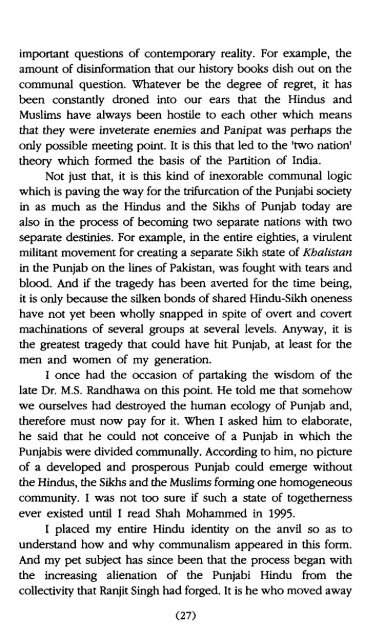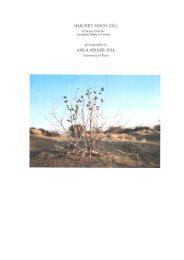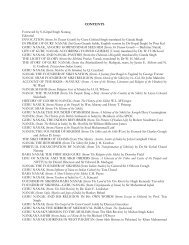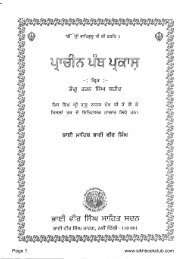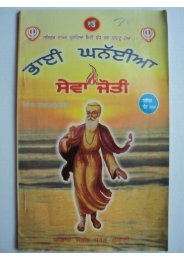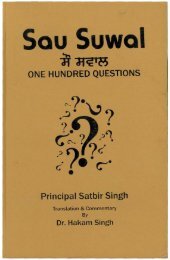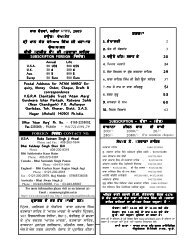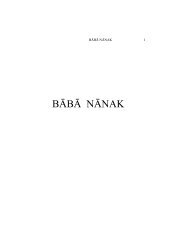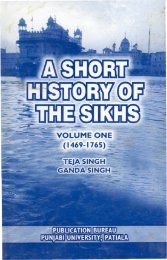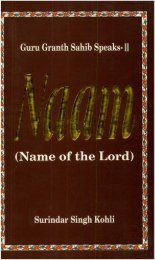You also want an ePaper? Increase the reach of your titles
YUMPU automatically turns print PDFs into web optimized ePapers that Google loves.
important questions of contemporary reality. For example, the<br />
amount of disinformation that our history books dish out on the<br />
communal question. Whatever be the degree of regret, it has<br />
been constantly droned into our ears that the Hindus and<br />
Muslims have always been hostile to each other which means<br />
that they were inveterate enemies and Panipat was perhaps the<br />
only possible meeting point. It is this that led to the 'two nation'<br />
theory which formed the basis of the Partition of India.<br />
Not just that, it is this kind of inexorable communal logic<br />
which is paving the way for the trifurcation of the Punjabi society<br />
in as much as the Hindus and the Sikhs of Punjab today are<br />
also in the process of becoming two separate nations with two<br />
separate destinies. For example, in the entire eighties, a virulent<br />
militant movement for creating a separate Sikh state of Khalistan<br />
in the Punjab on the lines of Pakistan, was fought with tears and<br />
blood. And if the tragedy has been averted for the time being,<br />
it is only because the silken bonds of shared Hindu-Sikh oneness<br />
have not yet been wholly snapped in spite of overt and covert<br />
machinations of several groups at several levels. Anyway, it is<br />
the greatest tragedy that could have hit Punjab, at least for the<br />
men and women of my generation.<br />
I once had the occasion of partaking the wisdom of the<br />
late Dr. M.S. Randhawa on this point. He told me that somehow<br />
we ourselves had destroyed the human ecology of Punjab and,<br />
therefore must now pay for it. When I asked him to elaborate,<br />
he said that he could not conceive of a Punjab in which the<br />
Punjabis were divided communally. According to him, no picture<br />
of a developed and prosperous Punjab could emerge without<br />
the Hindus, the Sikhs and the Muslims fonning one homogeneous<br />
community. I was not too sure if such a state of togetherness<br />
ever existed until I read Shah Mohammed in 1995.<br />
I placed my entire Hindu identity on the anvil so as to<br />
understand how and why communalism appeared in this form.<br />
And my pet subject has since been that the process began with<br />
the increasing alienation of the Punjabi Hindu from the<br />
collectivity that Ranjit Singh had forged. It is he who moved away<br />
(27)


